How A Prior Bankruptcy Filing Will Impact Your Current Case
Filing for bankruptcy is the most effective way for an individual to obtain relief from the burdens of debt. However, there are times when a person may find themselves back in debt as a result of unanticipated events. Medical problems, divorce, business failure or loss of employment may cause a person to slide back into overwhelming debt, thus necessitating another bankruptcy filing. As the founding attorney of The Law Office of Andrew M. Doktofsky, P.C., I have the experience to help protect your best interests when filing bankruptcy is necessary.
What effect does a prior bankruptcy have on a subsequent bankruptcy filing? While there is no statutory limit on the number of times that a person can file for bankruptcy, the Bankruptcy Code contains certain limitations on an ensuing bankruptcy case. These can be broken down into three main topics, which are detailed below.
Effect On The Right To A Discharge
The amount of time that must pass before a debtor may receive a discharge in a subsequent bankruptcy filing is shown below:
| Prior Bankruptcy Filing | Subsequent Bankruptcy Filing | Required Waiting Period |
| Chapter 7 | Chapter 7 | 8 years |
| Chapter 7 | Chapter 13 | 4 years |
| Chapter 13 | Chapter 7 | 6 years* |
| Chapter 13 | Chapter 13 | 2 years |
*The six-year period does not apply if the prior Chapter 13 bankruptcy proceeding resulted in payment of 100% of unsecured claims; or resulted in the payment of at least 70 percent of unsecured claims, and the plan was proposed in good faith and was the debtor’s best effort.
Note:
The time periods run from the filing date of the prior bankruptcy petition (not, e.g., date of discharge or date prior case was closed).
The prior case must have ended with a discharge. If no discharge was granted, then the waiting periods do not apply.
Keep in mind that the above time periods operate to bar a discharge in the subsequent bankruptcy. However, they do not prevent a debtor from filing another bankruptcy proceeding. For instance, a debtor may file a Chapter 13 bankruptcy for the purpose of curing a mortgage default, even if a prior bankruptcy filing makes the debtor ineligible for a discharge. So while a discharge cannot be granted, the succeeding Chapter 13 bankruptcy can still provide an effective means to stop a mortgage foreclosure.
Effect On A Person’s Eligibility To File For Bankruptcy
A person is not eligible to file for Chapter 7 or Chapter 13 bankruptcy if:
- he or she had been a debtor in a bankruptcy case pending at any time in the preceding 180 days
- the case was dismissed by the court for willful failure of the debtor to abide by orders of the court or to appear before the court in prosecution of the case or;
- the debtor voluntarily dismissed the bankruptcy proceeding following a request by a creditor for relief from the automatic stay.
Effect On The Automatic Stay
Upon the filing of a bankruptcy petition, an automatic stay goes into effect. The stay acts to stop all attempts to collect most types of debts. However, prior bankruptcy filings will have the following effects on a subsequently filed bankruptcy case:
- If a prior bankruptcy case was dismissed within the one year preceding the filing of the later bankruptcy case, the automatic stay terminates 30 days after filing. The court can extend the stay if it can be shown that the case was filed in good faith.
- If two or more bankruptcy cases have been dismissed within the one year preceding the filing of the later bankruptcy case, the automatic stay does not go into effect. However, the debtor (or any party in interest) has 30 days from the filing of the petition to request an order to have the stay take effect, by demonstrating that the bankruptcy case was filed in good faith.
The Bankruptcy Code provides that the following elements will constitute a presumption that the later bankruptcy case was not filed in good faith:
- More than one previous bankruptcy case was pending within the preceding one year period;
- A previous bankruptcy case was dismissed within the preceding one year period after the debtor failed to file or amend documents as required by the court without a substantial excuse; failed to provide adequate protection as ordered by the court or failed to perform the terms of a plan confirmed by the court; or
- There has not been a substantial change in the financial affairs of the debtor since the dismissal of the most recent preceding bankruptcy case.
Although these are presumptions that a case was not filed in good faith, these presumptions may be rebutted if the debtor can show clear and convincing evidence to the contrary.
Get Answers And Case-Specific Advice During A Free Consultation
If you have previously filed for bankruptcy, it is important that you consult with an experienced bankruptcy attorney to determine if you can file for bankruptcy again. I, Andrew M. Doktofsky, am a Long Island bankruptcy lawyer, and I can advise you on what options are available to you. Call 631-812-7712 or fill out an online contact form to schedule a free bankruptcy consultation. I represent clients throughout Long Island, New York, in both Nassau and Suffolk Counties as well as Long Island.
This is a debt relief agency. I help people file for bankruptcy relief under the Bankruptcy Code.

